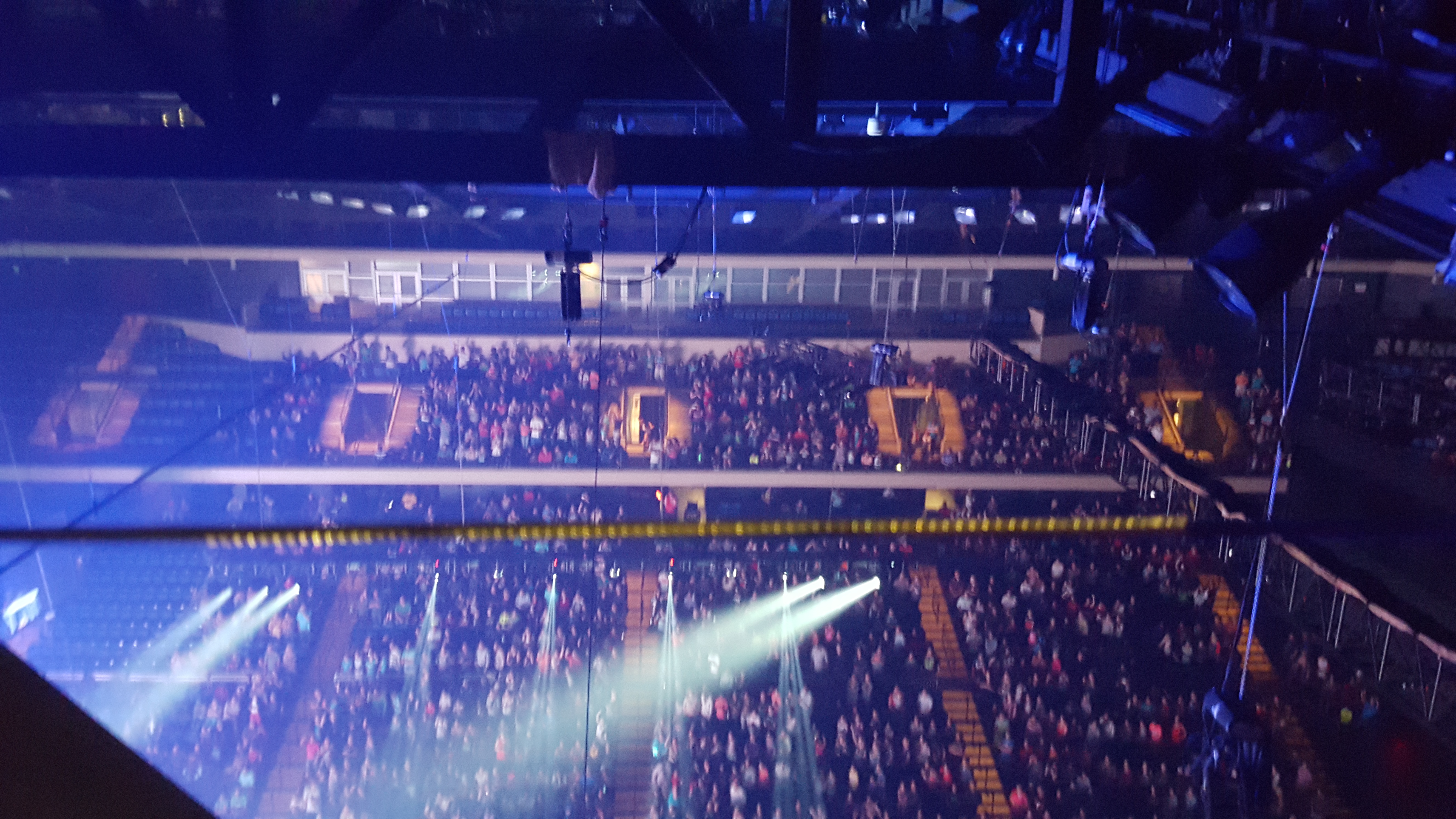When you hear the term “catwalk”, you probably think of a fashion show. The deep house music beings to play in your head (which I’m actually playing as I type). You can almost see the bright lights and picture the fashionably dressed models “cat walking” on the narrow runway, dressed in the clothing and accessories of different designers. The full picture of a high fashion show comes into reality, I know.
In a sense, you can keep that vision. In this piece, however, I am referring to the catwalks you find in some venues. They house a great amount of equipment: loudspeaker systems, work lighting, house lighting, truss and motors controls, videos hubs, venue sprinkler systems, and more. Most of the time a catwalk can be found simply by looking up before or after a production. Some are hidden above ceiling clouds, which are mostly located within worship centers or theater-type settings.
As an audio technician, you’ll probably have to take a trip up to the catwalk a time or two. Why? Because it comes with the job. You might have to feed power or microphones down onto the stage, or you might need to bring some truss in to hang your line arrays. Here are a few things to keep in mind while working on a catwalk.
The catwalk is located at one of the highest part of the building.
As I mentioned, you can usually lookup to locate a venue’s catwalk, which can range anywhere from 25 feet to 200 feet or more off the ground. When working that high in the air, the best thing to be is mindful. Be in the moment and pay attention. You don’t want to be the one to make a bad decision when working that high up off the ground.
Place Your Gear to The Rear
Once you make it up to the catwalk to begin a task, make sure your walkie-talkie and all other tools are clipped towards your rear before you begin. You don’t want anything falling over, or accidentally getting caught up on a railing or cables.
Feeding and Pulling Cable
Whether dropping cables in or pulling cables out, CALL IT OUT. You must communicate with all workers in the air with you, as well as below, for everyone’s safety. Keep cable management front of mind. Loose cables can be dangerous when working and walking the catwalk. You don’t want to trip yourself or anyone else on the team.
When feeding cables in, secure them with a rope by tying it with a bowline knot and slowly dropping the cables in until a member below lets you know you’re clear. Be sure all cables being fed in are clear of any other hanging objects. Pull your rope back up and out of the way. Then secure additional slack on a railing with tie line in a bow knot (or shoelace knot).
When pulling cables out, be sure to properly roll the cable (over, under). If doing in-house work, you should be able to properly coil the cable and tie it in place with a bowknot to secure the cable. If not, strike what needs to be struck and continue on to the next task.
Never Go Out on the Beams
Most of the time, beams are extended from the catwalk across the facility floor layout. These beams will house motors, which you use to hang truss. Truss can hold lighting, line arrays, or large projectors screens. DO NOT go out on the beams for any reason, unless you are rigging certified. Here you can find certified riggers nationwide, as well as full details on how to become certified yourself. You will need proper training and specific gear to go out on these beams. I suggest you take one step at a time and let the riggers handle that part for now. I also want to encourage you to become a certified rigger if you want to do more work within this part of the field.
These few basic guidelines will help you stay safe while you strut your stuff up on that catwalk.
